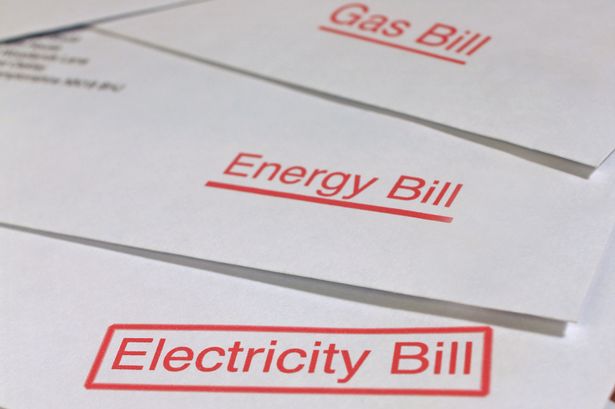Almost a fifth (19%) of Conwy residents’ salaries may be spent on energy bills by October
Electric Radiators Direct analysed how typical energy bills compare to average salaries across the country, to find out where residents are spending the most on gas and electricity compared to their income
- Conwy residents are spending 11.7% of their salary on energy bills, 2% more than the average Brit – and this could hit 19% when the energy price cap rises
- The average Brit is currently spending 9% of their income on energy bills
- North Wales and Merseyside pay more for their energy than any other area of the country, with a standard bill of £2,069 a year
- South Wales closely follows this with a bill of £2,041
- With energy bills expected to rise again in October, Electric Radiators Direct has identified the areas that could be squeezed most by the end of the year
- You can find more information about the study here: https://www.electricradiatorsdirect.co.uk/news/how-much-of-your-salary-are-you-spending-on-energy-bills/
Conwy residents are spending a higher percentage of their salary on their energy bills than Brits in most other areas of the UK, a new study has found.
On average, people in Conwy are currently spending 11.7% of their take home pay on energy bills, but if the energy price cap rises as predicted, this could rise to as high as 19.3% – meaning locals will be spending a nearly fifth of their pay on energy alone.
The research found that Conwy residents have an average take-home pay of £17,665, while the average energy bill in North Wales and Merseyside is £2,069.
Nationwide, around 9% of take-home pay currently goes on energy bills, but this could rise to more than 16% if the energy price cap goes up (by 65%) in the autumn, as is currently predicted.
Shockingly, Conwy residents who have low energy consumption levels are still spending 8% of their salary on energy bills – almost as much as the average Brit who uses a ‘normal’ amount of energy.
Before the recent April energy price cap increase, it was estimated that Brits would spend around 6% of their salary on energy bills – so by October, this proportion may have more than doubled year-on-year.
The new study from Electric Radiators Direct calculated the potential energy bill cost both nationwide and in each region based on cost of gas, electricity, and standing charges1, and compared this with the average salary after taxes in 211 locations, to find out where Brits are spending the highest percentage of their income on energy bills.
The research reveals that the areas paying the most for energy, based on standard consumption levels, are North Wales and Merseyside, where typical bills now total £2,069 a year. Closely following, the South West (£2,062) and South Wales (£2,041) make up the top three locations where energy currently costs the most.
People living in the South West are spending the highest percentage of their salary on energy costs though – with a typical household bill accounting for 10.47% of the take-home wage in the region, followed by those in Wales (10.45%) and the North East (10.28%).
Mendip (12%) and Teignbridge (11.8%) are the other areas in the South West where energy bills account for the largest proportion of average salaries.
The top ten UK areas where residents are spending the highest percentage of their salaries on energy bills:
- Rother, South East (12.3%)
- Cotswold, South West (12.3%)
- Maldon, East (12.0%)
- Mendip, South West (12.0%)
- Southend-on-Sea, East (11.9%)
- Oadby and Wigston, East Midlands (11.8%)
- Hastings, South East (11.8%)
- Teignbridge, South West (11.8%)
- Cornwall, South West (11.7%)
- Conwy / Conwy, Wales (11.7%)
Even when considering how this could affect homes with two earners, each paying member of the household could be spending at least 6% of their annual take-home salary on energy bills.
Many may be looking to reduce their energy consumption in order to soften the blow of these rising costs. However, the study has shown that even with lower consumption levels, current energy prices mean Brits could still be spending at least 7% of their salary on their energy bills.
The impact of the October 2022 price cap increase
Experts are predicting the new energy price cap increase could mean prices rise by as much as 65%.
While the total bill still varies according to individual energy use, location and method of payment, as well as other charges set by energy networks, experts predict the average energy bill in the UK could rise to £3,300 from October 2022.
This will mean that in locations where residents are spending the highest percentage of their take-home salary on bills, people could see this rise even further to as much as 20%.
How the predicted energy price rise could impact the percentage of salary spent on energy bills, in the top ten worst-affected areas:
- Rother, South East (20.36%)
- Cotswold, South West (20.31%)
- Maldon, East (19.84%)
- Mendip, South West (19.77%)
- Southend-on-Sea, East (19.58%)
- Oadby and Wigston, East Midlands (19.48%)
- Hastings, South East (19.48%)
- Teignbridge, South West (19.46%)
- Cornwall UA, South West (19.34%)
- Conwy / Conwy, Wales (19.33%)
Stephen Hankinson, Managing Director at Electric Radiators Direct commented on the findings and provides insight into why energy bill spend varies so much between regions:
“The rise in energy bills has tightened everyone’s spending habits already this year – and many are worried about a further price increase at the end of the year. To assess the impact high energy costs are having across the country, we sought to compare the typical bill to average salaries across regions, to see which areas are being hit the hardest. And people living in the South West, Wales, or the North East have seen bills rocket relative to income, now comprising around 12% of typical take home pay.
“In terms of why we see this regional difference, energy can cost more or less to generate in different areas of the country. For example, energy may be cheaper to generate in an area with lots of local renewable energy supplies.
“Energy can also be more expensive in areas where less is sold because there are fewer customers – naturally, things tend to be cheaper bought in bulk. Suppliers will spend more at wholesale if they have more customers to sell to.
“These are just a couple of reasons why we see a regional difference, however pinning down the exact reasons why energy is priced as it is in particular areas is much more complex.
“While scaling back on usage can help in some instances – and little changes such as switching off plugs for appliances we’re not using and generally making sure we’re not wasting useful energy can be beneficial – sometimes it may be easier to reconsider the source of our energy and the way we heat our homes, as other options can not only be cheaper in the long run, but also better for the planet.
“Solutions such as smart electric radiators give you a more advanced level of programming, so that you can keep on top of how the heating in your property is being used. Many smart electric radiators come with WiFi app control, which allows you to manage your heating on the go, enabling quick and simple changes no matter where you are. So, even if you accidentally leave your radiators on, you can use a compatible app on your phone to switch them off remotely, minimising energy waste.”

| [donate]
| Help keep news FREE for our readersSupporting your local community newspaper/online news outlet is crucial now more than ever. If you believe in independent journalism,then consider making a valuable contribution by making a one-time or monthly donation. We operate in rural areas where providing unbiased news can be challenging. |



















